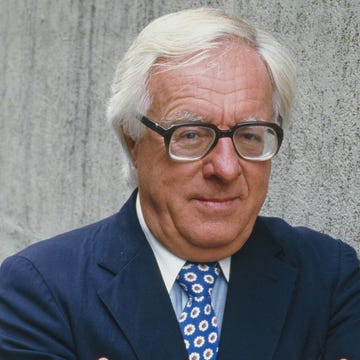Anyone in Los Angeles who bothers to read assessments of the city in New York publications will be familiar with their all-too-common tone of uninformed dismissal. It’s tempting to trace such attitudes back to the writer Dorothy Parker, who described Hollywood as a “small townish…strenuous bore,” “as dull a domain as dots the globe,” and (perhaps most pointedly) “a state of mindlessness” and “a horror.”
Yet despite her well-known reputation as the New Yorkest of New York writers and her initial disdain for Hollywood, Parker lived in Southern California for more than 30 years. In this way, she brings to mind Joan Didion, commuting between the coasts and coming to represent them both. When Hollywood came calling with a fat check, Parker was happy to leave Manhattan and relocate to Los Angeles.
She wasn’t thrilled with the work, but she was plenty pleased with the money.
It is here, as Parker settles into her life as a screenwriter, that Gail Crowther’s Dorothy Parker in Hollywood takes shape. Crowther is no stranger to troubled female writers who have been misunderstood and underestimated at every turn. Her 2021 book, Three-Martini Afternoons at the Ritz, chronicles “The Rebellion of Sylvia Plath & Anne Sexton.” Before the lives of these two writers came to represent the female artist as chaotic and doomed, however, Parker paved the way.
It’s difficult to approach a figure such as Parker and say something new. Haven’t we heard it all before? And yet, as Crowther observes, the writer Wyatt Cooper “famously wrote that whatever you think Dorothy Parker was like, she wasn’t.” Throughout the book, Crowther leans into this unknowing, a move made all the more impressive since it has been achieved without the assistance of any dedicated, official archives. Parker’s Hollywood years have long been overlooked because people didn’t put too much stock in her work there. To be fair, neither did she.
After a brief overview of Parker’s childhood and early adulthood in New York—where she became the city’s only female drama critic at the time, cofounded the Algonquin Round Table, and was a popular gadabout—Dorothy Parker in Hollywood quickly moves to California, where, among the more biographical elements, Crowther also offers a portrait of the early days of the film industry.
The move from silent movies to talkies required…well…talking, so a woman known for charming repartee was exactly what the studios valued. Sam Goldwyn, Crowther writes, wanted “to use ‘classy writers’ to inject ‘verbal eminence’ into his films.” Parker, for her part, saw this in sharper terms, saying she was often hired for “giving the girl more to do.” Either way, upon moving to Hollywood in 1934, she was a 41-year-old female writer making the equivalent of $20,000 a week in today’s money. Even in 2024, those stats are impressive.
A book like Crowther’s is necessary after media portrayals such as the 1994 film Mrs. Parker and the Vicious Circle, which depicted Parker as a miserable person without understanding her persona. Yes, Crowther acknowledges, Parker suffered from alcoholism, despair, and “spectacularly unsuitable younger lovers,” and made several suicide attempts. But there was also personal success, respected collaborations, and epic celebrations, as well as literary community, gardening, knitting, dogs, and purpose.
While Parker is most frequently identified as a “wit,” Crowther emphasizes that she was a lifelong activist, and Hollywood allowed her to come into her own in ways that truly mattered to her. To read about the trajectory that followed is to realize how little has changed in this town, this industry, and this world over the past century.
As both a writer and a woman, Parker suffered. But it’s not just the discrimination and sexist condescension she faced, or even the struggle for reproductive autonomy, that resonate for us now; it’s also the fight against fascism, the strikes against the studios, and the battle over intellectual property.
“To secure a fortune as a writer in Hollywood,” Crowther writes, “meant giving up so many aspects of authorship that had previously been taken for granted—editorial approval, accreditation, pride in one’s work.”
Few people today likely realize that the Screen Writers Guild was formed in part because of Parker’s contributions. In 1934, Crowther tells us, “it took over half the screenwriters in Hollywood one year to earn what Dorothy Parker was being paid for one week.” So Parker saw it as her duty to go to bat for all writers.
“Hollywood,” Crowther goes on, “was the place she found she could fight the things she loathed.” Not only that, but “she finally found an equally committed group of comrades, her own people, who could use their positions and power in a number of political ways.” She cofounded the Hollywood Anti-Nazi League and traveled to Spain to document the civil war for American readers. Parker left her estate to Martin Luther King Jr.; it was passed to the NAACP after his death.
For Crowther, Parker’s sensibility derived from early trauma. She was “always expecting the worst and never really being disappointed because the worst tended to happen.” Unfortunately, California did not disappoint. When she moved to Los Angeles, she came with her second (and, later, third) husband, Alan Campbell. Together, the two spent years working on scripts while coping with addiction, miscarriages, and world war. Parker was nominated for Academy Awards for 1938’s A Star Is Born and 1947’s Smash-Up: The Story of a Woman. The latter film was tragically prescient of what was coming for her.
Eventually, Parker’s activism led to her being branded a Communist, investigated by the FBI and the House Un-American Activities Committee, and blacklisted by the industry. Her excessive drinking and isolation intensified. Dorothy Parker in Hollywood does not shy away from these realities, but they are not the story. Rather, Crowther offers a larger and more complicated human narrative.•

Chris Daley has written about books, cults, and heartbreak in the Los Angeles Times, Air/Light, Essay Daily, the Los Angeles Review of Books, the Collagist, Brief Encounters: A Collection of Contemporary Nonfiction, and elsewhere. She publishes the Submission Sunday newsletter on Substack and designs author websites at chrisdaley.com.













